What Is Keto Rash?
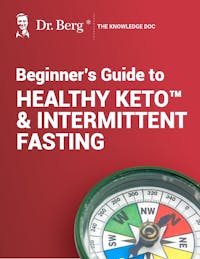
Beginner’s Guide to Healthy Keto & Intermittent Fasting
Receive a step-by-step guide to starting Healthy Keto® and intermittent fasting
Learn about foundational principles and best practices for beginners
Get detailed visual guidance on portion sizes and meal composition
Discover how to set achievable goals and monitor your progress
Find practical tips for overcoming common challenges and staying motivated

Beginner’s Guide to Healthy Keto & Intermittent Fasting
Receive a step-by-step guide to starting Healthy Keto® and intermittent fasting
Learn about foundational principles and best practices for beginners
Get detailed visual guidance on portion sizes and meal composition
Discover how to set achievable goals and monitor your progress
Find practical tips for overcoming common challenges and staying motivated

Beginner’s Guide to Healthy Keto & Intermittent Fasting
Receive a step-by-step guide to starting Healthy Keto® and intermittent fasting
Learn about foundational principles and best practices for beginners
Get detailed visual guidance on portion sizes and meal composition
Discover how to set achievable goals and monitor your progress
Find practical tips for overcoming common challenges and staying motivated

Beginner’s Guide to Healthy Keto & Intermittent Fasting
Receive a step-by-step guide to starting Healthy Keto® and intermittent fasting
Learn about foundational principles and best practices for beginners
Get detailed visual guidance on portion sizes and meal composition
Discover how to set achievable goals and monitor your progress
Find practical tips for overcoming common challenges and staying motivated

Beginner’s Guide to Healthy Keto & Intermittent Fasting
Receive a step-by-step guide to starting Healthy Keto® and intermittent fasting
Learn about foundational principles and best practices for beginners
Get detailed visual guidance on portion sizes and meal composition
Discover how to set achievable goals and monitor your progress
Find practical tips for overcoming common challenges and staying motivated

Beginner’s Guide to Healthy Keto & Intermittent Fasting
Receive a step-by-step guide to starting Healthy Keto® and intermittent fasting
Learn about foundational principles and best practices for beginners
Get detailed visual guidance on portion sizes and meal composition
Discover how to set achievable goals and monitor your progress
Find practical tips for overcoming common challenges and staying motivated

Beginner’s Guide to Healthy Keto & Intermittent Fasting
Receive a step-by-step guide to starting Healthy Keto® and intermittent fasting
Learn about foundational principles and best practices for beginners
Get detailed visual guidance on portion sizes and meal composition
Discover how to set achievable goals and monitor your progress
Find practical tips for overcoming common challenges and staying motivated

Beginner’s Guide to Healthy Keto & Intermittent Fasting
Receive a step-by-step guide to starting Healthy Keto® and intermittent fasting
Learn about foundational principles and best practices for beginners
Get detailed visual guidance on portion sizes and meal composition
Discover how to set achievable goals and monitor your progress
Find practical tips for overcoming common challenges and staying motivated

Beginner’s Guide to Healthy Keto & Intermittent Fasting
Receive a step-by-step guide to starting Healthy Keto® and intermittent fasting
Learn about foundational principles and best practices for beginners
Get detailed visual guidance on portion sizes and meal composition
Discover how to set achievable goals and monitor your progress
Find practical tips for overcoming common challenges and staying motivated

Beginner’s Guide to Healthy Keto & Intermittent Fasting
Receive a step-by-step guide to starting Healthy Keto® and intermittent fasting
Learn about foundational principles and best practices for beginners
Get detailed visual guidance on portion sizes and meal composition
Discover how to set achievable goals and monitor your progress
Find practical tips for overcoming common challenges and staying motivated

Beginner’s Guide to Healthy Keto & Intermittent Fasting
Receive a step-by-step guide to starting Healthy Keto® and intermittent fasting
Learn about foundational principles and best practices for beginners
Get detailed visual guidance on portion sizes and meal composition
Discover how to set achievable goals and monitor your progress
Find practical tips for overcoming common challenges and staying motivated

Beginner’s Guide to Healthy Keto & Intermittent Fasting
Receive a step-by-step guide to starting Healthy Keto® and intermittent fasting
Learn about foundational principles and best practices for beginners
Get detailed visual guidance on portion sizes and meal composition
Discover how to set achievable goals and monitor your progress
Find practical tips for overcoming common challenges and staying motivated
You recently started keto and now have an itchy rash? You may have developed a keto rash. Keto rash can happen during the early weeks of keto and is nothing to be concerned about—it can actually be a sign that your body is adapting to ketosis.
Transitioning your body to burn fat instead of carbs for energy requires significant changes in your metabolic state. As your body adapts, keto rash will likely clear up and heal on its own.
Let’s talk about what causes keto rash and learn what steps you can take to help your skin clear up quickly.
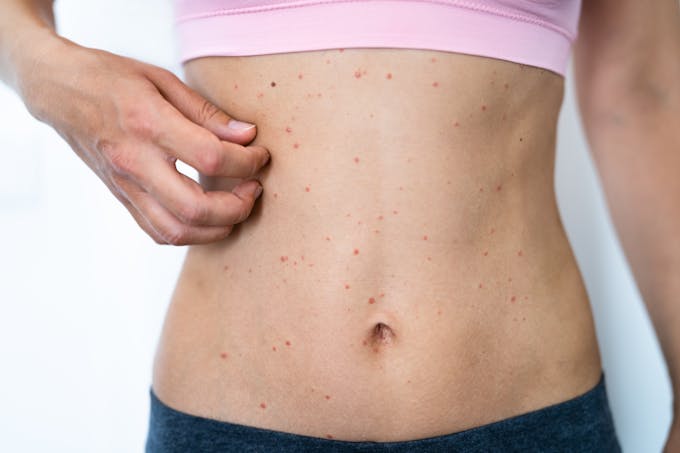
Causes of keto rash
The exact cause for keto rash isn't very well understood yet. But, we do understand how ketosis changes your metabolism and how this may contribute to developing itchy skin.
A skin condition called prurigo pigmentosa has almost identical symptoms and commonly occurs in people who have undergone bariatric surgery, are developing diabetes, or started excessive fasting.
Research suggests that the keto rash is similar to prurigo pigmentosa and caused by skin inflammation in response to ketosis.
Keto rash is rare, and it doesn't mean keto isn't right for you. Understanding its causes is the first step to finding solutions for getting rid of keto rash fast.
Here are six potential causes of keto rash.
Increased fat turnover
As your body enters ketosis, you start to burn fat for energy. This mobilizes your metabolism to release more body fat to provide a steady fuel source.
Fat doesn’t just store energy; fat also binds to toxins and metabolic waste products. As your body frees up more fat, your liver has to detoxify increasing amounts of toxins.
The skin is one route for your body to excrete toxins, and the greater demand on your liver to detoxify during the early stages of keto can lead to temporary skin inflammation.
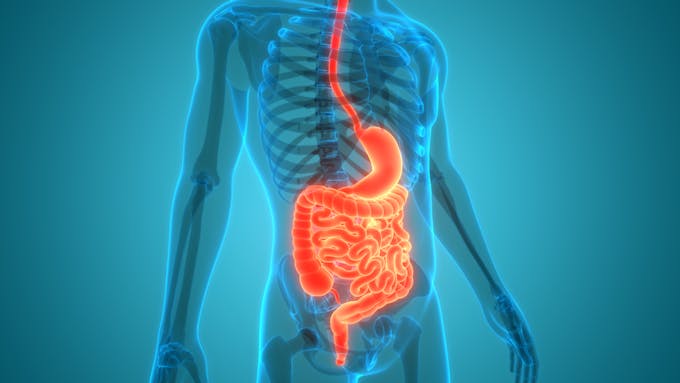
Sluggish fat digestion
Transitioning to keto takes time, and achieving ketosis is only one part of a successful keto diet. Your body also requires plenty of bile to digest high-fat foods, absorb fat-soluble vitamins, and detoxify.
Fatty foods in the stomach trigger your gallbladder to contract, causing the release of stored bile into the small intestines. The salts in your bile act like a detergent or soap and emulsify fats into soluble fatty acids. As you consume more fat, your liver produces more bile.
If you don't have a gallbladder, don't produce enough bile, or aren't fully keto-adapted, your body won't be as efficient in getting rid of toxins, and you may end up lacking essential nutrients for skin health.
Lack of fat-soluble nutrients
If you are new to the ketogenic diet, chances are your digestive system is still adjusting to high-fat foods. Inadequate fat digestion can result in a lack of fat-soluble nutrients like vitamins A, D, E, and K and omega-3 fatty acids.
Nutrient deficiency is a common cause of skin conditions. Vitamins A and E are crucial for skin health and renewal. Vitamin D and omega-3 fatty acids are anti-inflammatory, and becoming deficient in these is linked to rashes and itchy skin.
Food allergies
You may have introduced new foods as part of your keto meal plan. A sudden increase in ingredients that you may be sensitive to can increase inflammation and trigger keto rash.
Food sensitivities, combined with the changes in your metabolism, can worsen keto rash.
Emotional stress
While emotional stress may not cause keto rash, it can make it worse.
Stress hormones cause your blood vessels to widen and increase inflammation, causing your skin to become more sensitive to irritation.
Low vitamin B2
Keto rash may be caused by a vitamin B2 deficiency. Vitamin B2 is essential for skin health. Signs of low vitamin B2 include dry, itchy, and scaly skin.
Vitamin B2 is involved in fat metabolism—the more fat that you eat, the more vitamin B2 your body needs. If you start the ketogenic diet with a vitamin B2 deficiency or a subclinical vitamin B2 deficiency, the problems related to the deficiency will be magnified.
The stages of keto rash
Keto rash usually appears within the first few weeks of starting keto. It looks similar to dermatitis, and skin lesions develop primarily across the torso, armpits, neck, back, shoulders, and chest. It’s rare to have keto rash on your face or extremities.
Although severity of the keto rash can vary, this study found that most cases have four stages.
During the first stage, your skin may show light pink raised skin lesions similar to scratch marks. These early lesions often are almost unnoticeable and get overlooked or ignored.
The second stage of keto rash shows very noticeable skin lesions called papules. These cysts can contain liquid or even puss. This stage usually is accompanied by itchiness and discomfort.
During the third stage, keto rash improves. Previously inflamed papules take on a darker color and scale over.
The fourth and final stage occurs when raised skin lesions diminish, and a net-like pattern spreads across the area of the rash. Even though you may still see darker freckle-like spots, the rash is gone, and your skin will eventually return to normal.
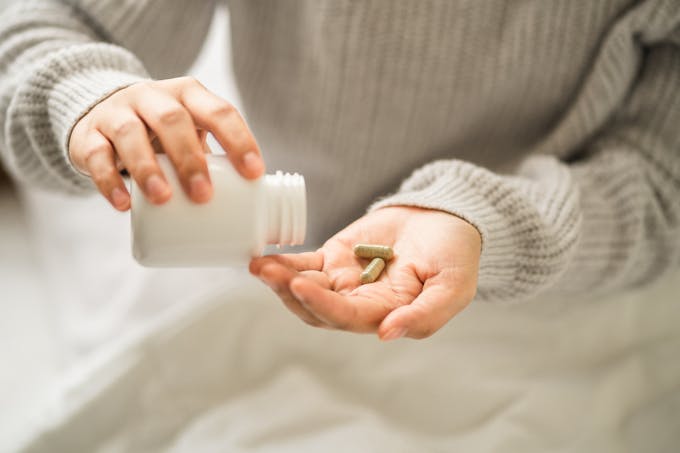
How to get rid of keto rash
As your body becomes keto-adapted, keto rash usually improves and disappears after a few weeks. There isn't a specific treatment to cure keto rash, but you can take plenty of steps to help your skin heal quickly.
Support your digestion
Helping your digestion adapt to keto may alleviate keto rash. You can support your fat digestion by taking purified bile salts after meals. Bile salts also enhance the absorption of fat-soluble nutrients and support detoxification.
Foods high in long-chain fatty acids need bile salts to be absorbed. Medium-chain triglycerides (MCTs), however, don't require bile. Coconut oil, grass-fed butter, and full-fat yogurt contain MCTs and are excellent choices to help your body adapt to keto.
Adjust your carb intake
Your body may need more time to adjust to a low-carb diet. Increase your carbohydrate intake to get you out of ketosis for a few days. Chances are your rash will improve, and you can slowly transition back into keto.
Reduce your carb intake gradually and watch out for changes in your skin. If keto rash reappears, diet modification may be necessary. Some people can transition into keto within a few days, while others need a little longer.
Give your skin time to heal
Most keto rashes clear up without treatment. If you just started keto, you likely lowered your carb consumption drastically, causing profound shifts in your metabolism.
The longer you are in ketosis, the more your body will adapt to a high-fat diet.
Avoid skin irritants
Tight clothes, harsh soaps, excessive sweat, or loofahs are unlikely to blame for your keto rash but keeping these potential skin irritants to a minimum helps to heal.
Keeping your skin moisturized with a gentle cream or oil can help to reduce itching and discomfort.
How to avoid keto rash
The exact cause of keto rash is unknown and whether you develop keto rash or not depends on many factors. However, you can support your body's transition into keto and increase your chances of preventing keto rash.
Here are four ways to help transition your body into ketosis and reduce your risk of developing a keto rash.
Transition slowly
Depending on your previous diet, body weight, and metabolism, your body may initially be sensitive to ketone bodies.
Transition into ketosis slowly to allow your body to adapt. As your ketone levels rise gradually, watch out for symptoms and adjust your keto diet accordingly.
Correct bile deficiency
Supporting your digestive system is crucial to help you adapt to keto. Bile salts aren't just needed to break down fat. They also increase the absorption of fat-soluble vitamins and remove toxins from the liver.
Supplement with purified bile salts and digestive enzymes to avoid malabsorption of healthy fats and nutrients. These supplements also alleviate stress on your liver and support healthy detoxification.
Follow a Healthy Keto® diet
A healthy and balanced ketogenic diet doesn't just require low-carb and high-fat foods. The best foods for keto rash are nutrient-dense foods that support healthy vitamin and mineral levels.
Healthy Keto is full of anti-inflammatory foods and rich in fiber, supports detoxification, and improves fat digestion.
Add intermittent fasting gradually
Starting keto and intermittent fasting at the same time may overwhelm your liver's capacity to burn fat, process toxins, and produce bile. Depending on your previous diet, weight, or exposure to toxins, going keto and starting intermittent fasting simultaneously may increase the risk of developing keto rash.
You can start with a small fasting window and gradually increase it over several weeks to help your body adjust to intermittent fasting.
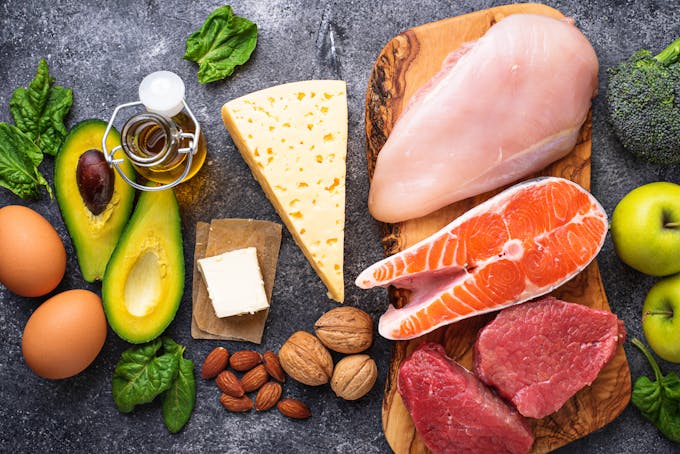
Key takeaways
Keto rash is a rare side effect of ketosis and usually develops within the first few weeks of starting the ketogenic diet. The exact cause of keto rash isn't known.
However, starting keto means drastic changes to your diet and requires your metabolism to adjust to burning fat instead of sugar.
Increasing high-fat foods can overwhelm your digestive ability to break down and absorb fats and cause nutrient deficiencies. Supporting your digestion should be your first step to getting rid of keto rash.
Supplementing with purified bile salts and digestive enzymes, transitioning into keto slowly, and following Healthy Keto helps to prevent keto rash.
FAQ
1. Why do I have a rash after starting keto?
The exact cause of keto rash isn't known. Because it typically appears during the early stages of keto, keto rash can happen as your body adjusts to a low-carb diet.
Increasing high-fat foods can overwhelm your digestive ability to break down and absorb fats. Supporting your digestion should be your first step to getting rid of keto rash.
2. What causes a keto rash?
A combination of factors likely causes keto rash. Sluggish fat digestion and bile salt deficiency can lead to a temporary backup of toxins in the liver, causing an inflammatory response and keto rash.
Bile deficiency can cause nutrient deficiencies of fat-soluble nutrients like vitamins A, D, E, and K, along with omega-3 fatty acids. A lack of these nutrients can lead to skin conditions, inflammation, and itchiness.
3. Is a rash common on keto?
Keto rash is a rare side effect of the ketogenic diet.
4. Is a rash a symptom of the keto flu?
Keto rash isn't technically a symptom of the keto flu. However, keto rash and keto flu can occur at the same time. Both are side effects of transitioning to keto's low carb intake. As your body adjusts, keto flu and keto rash typically disappear.
5. How can I get rid of a keto rash?
While most cases disappear within a few weeks, enhancing your body's ability to digest fat can improve keto rash significantly. Taking purified bile salt supplements is a great way to support your digestion as you transition to the keto diet.
Depending on the severity and duration of your rash, diet modification may be necessary. Eating more carbs for a few days typically helps with keto rash.
Transitioning slowly back to keto will give your body and metabolism time to adjust.
6. How long does a keto rash last?
Keto rash typically disappears within a few weeks.
7. How long does it take for a keto rash to go away after keto adaptation?
That depends on many factors–your previous diet, body weight, and how metabolically flexible you are. Some people can transition into keto within a few days, while others need a little longer.
In most cases, keto rash disappears within a few weeks after keto adaptation. If your keto rash developed into a freckle-like appearance with a net-like pattern spread across the area of the rash, you are in the final stage of keto rash.
8. Can you get a rash from fasting?
Yes, fasting can cause keto rash. Starting keto and intermittent fasting at the same time may overwhelm your liver's capacity to burn fat, process toxins, and produce bile. Depending on your previous diet, weight, or exposure to toxins, going keto and doing intermittent fasting may increase the risk of developing keto rash.
9. Does keto rash go away?
Yes, it's a temporary rash that typically goes away on its own.
10. What does ketosis rash look like?
Keto rash goes through four stages. Initially, you may have light pink lesions similar to scratch marks. During the second stage, these lesions progress into inflamed papules and cysts that can contain fluid or pus.
As you enter stage three, keto rash improves. Papules dry up, scab over, and itchiness subsides. During the fourth and final stage, the rash looks freckle-like. Even though you may still see darker spots, the rash is gone, and your skin will eventually return to normal.
11. Where do you get keto rash?
Keto rash typically appears on the torso, armpits, neck, back, shoulders, and chest. It's rare to have keto rash on your face or extremities.
12. Can you get keto rash on your legs?
While it’s uncommon, you can develop keto rash on your legs.
13. Can keto cause hives?
Keto rash doesn't cause hives, but the papules can take on a similar appearance, particularly during the early stages. An allergic reaction or sensitivity usually causes hives.
You may have introduced food allergens to your diet if you develop hives. A food diary can help identify foods you may be sensitive or allergic to.
14. How long do keto hives last?
How long keto hives last depends on what causes them. If it's keto rash, it typically disappears within a few weeks after keto adaptation.
15. Does keto cause a rash on your face?
It's uncommon to develop keto rash on your face. However, some people have reported a facial rash in response to keto dieting.
16. How do I get rid of a keto rash on my face?
Supplement with purified bile salts and digestive enzymes to support fat digestion. The best foods for keto rash are nutrient-dense foods that support healthy vitamin and mineral levels. Healthy Keto is full of anti-inflammatory foods and rich in fiber, supports detoxification, and improves fat digestion.
17. Does keto rash mean you are in ketosis?
Yes, it usually indicates that your body is burning ketones for energy.
18. Does ketosis make you itchy?
As your body enters ketosis, you start to burn fat for energy. This mobilizes your metabolism to release more body fat to provide a steady fuel source. Fat doesn't just store energy; fat also binds to toxins and metabolic waste products. As your body liberates fats, your liver is suddenly tasked with detoxifying these substances.
Skin is one route for your body to excrete toxins, and the increased demand on your liver to detoxify, especially during the early stages of keto, can lead to temporary skin irritation and itchiness.
19. Is keto rash always itchy?
While most people have an itchy keto rash, some experience little to no itchiness.
20. Does your skin get itchy when you lose weight?
It's not uncommon to experience itching when you lose weight. Rapid weight loss causes changes to the stretchiness of your skin. As your skin adjusts to weight loss, nerve endings and blood vessels shift, leading to itchy skin.
21. Can keto cause allergies?
The ketogenic diet doesn't cause allergies, but you may have introduced new food allergens. A sudden increase in foods you may be sensitive to can lead to allergies and skin reactions.
22. How do you get rid of ketosis bumps?
While most cases typically disappear within a few weeks, enhancing your body's ability to digest fat can improve keto rash significantly. Taking purified bile salt supplements is an excellent choice to support your digestion.
23. Does keto rash go away on its own?
Yes, most cases of keto rash go away once your body adapts to keto.
24. Do antihistamines help with keto rash?
No, antihistamines do not help with keto rash.
25. Can a low-carb diet cause a rash?
Yes, low-carb diets can cause a rash during the early stages of keto. Once your body adapts to ketosis, the rash typically disappears.
Previous blog
Concerned About Adding Fat to Your DietNext blog
Digestion Made Simple MUST WATCH
Popular
08/21/2024
46.4K views
05/22/2024
40.8K views
11/18/2024
242K views
03/18/2024
11/21/2022




